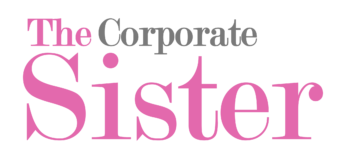Diversity and inclusion (D&I) has become in recent years one of the most prevalent go-to terms for organizations, institutions and people alike. Very often, it presents itself as a collection of in-house trainings or informational sessions. While most diversity and inclusion initiatives are generally well-meaning, there may be some level of misinformation, status quo, or disconnection that may impair their real effectiveness.

Truth is, while the tone at the top is crucial in setting impactful diversity and inclusion initiatives, everyone within and outside of the organization is responsible for establishing and fostering a culture of inclusiveness and representation. As employees, it is also our responsibility and positive contribution to foster increased diversity and inclusiveness through our work, professional and personal decisions. As business owners, we carry the burden of ensuring that our business’ values, people, and processes embody a spirit of representation for all and further equality and equity for all. As consumers of information and goods, we have the power to pick and choose the companies Doing so can be challenging, however it may start with asking a few necessary questions of the organizations we work in, buy from and are around:
- What is the organization’s status in terms of diversity and inclusion?
As we consider the companies we’re part of, consume from or are around, we must also ask ourselves what they look like from the inside. That is, in terms of their culture, people, and processes.
Who are the faces of the company at the management and leadership levels, and do they embody diversity and inclusiveness? Are employees representative of various groups, including minority and under-represented groups? Who makes important decisions at the Board of Directors level? These are just a few questions to begin with…
- What outcomes are being worked towards?
It’s one thing to have representation in the leadership and culture of the organization, it’s another to be continuously working towards better outcomes in terms of diversity and inclusion.
Are these part of the strategic plan of the organization? Are managers trained to include desired outcomes in their performance plan? If not, what can be done to begin sooner than later?
- How will the culture change to be more diverse and inclusive?
One of the biggest obstacles faced by diversity and inclusion trainings is the very culture of organizations. Unless the company culture is open to equity and equality for all, chances at increasing diversity and inclusion are slim to non-existent.
It begins with asking what the true culture of the organization is. How do employees and management perceive it? What can be done to foster a more diverse and inclusive culture?
- Do the leadership and tone at the top value diversity and inclusiveness?
Tone at the top is crucial in influencing the culture and direction of organization. For adequate representation and increased inclusiveness, the leadership and management also have to be on board.
It’s then worthwhile to ask what the tone at the top is. What does the leadership believe in, and envision as the future direction of the company, business or institution? Is diversity as well as inclusiveness one of their priorities?
- Are diversity and inclusiveness used or included as metrics in the organization?
You can’t improve what you don’t measure. Improving diversity and inclusiveness then requires measuring it first. To do so, creating and/or implementing adequate metrics is necessary. By including these metrics as a part of the organization’s plans, as well as people’s performance and processes’ evaluation, they not only measurable, but also a solid foundation for growth.
What types of metrics can be implemented? How can these be included in employees’ performance evaluations? How can these be reflected in the organization’s policies and procedures?
- Are the appropriate resources available and/or in place?
Keeping organizations accountable for inclusiveness and diversity also means ensuring the appropriate resources, such as training resources, education materials, as well as educators, are available to be used. This also means evaluating current resources (or the lack thereof) for signs of being outdated or inaccurate.
What resources, if any, are currently being used to address diversity and inclusion in the organization? Are these appropriate or need to be updated and/or revised?
- Is everyone held accountable for diversity and inclusiveness matters?
Last but not least, is everyone being held accountable in and outside of the organization for diversity and inclusiveness? This means not just management and the leadership, but each and every single employee, customer and stakeholder? The organizations we believe in, consume from and work in, can only do the work of fostering diversity and inclusiveness if we all contribute and actively participate.
Which questions have you been asking of the organizations around you to hold them more accountable in terms of diversity and inclusiveness?
The Corporate Sis.









